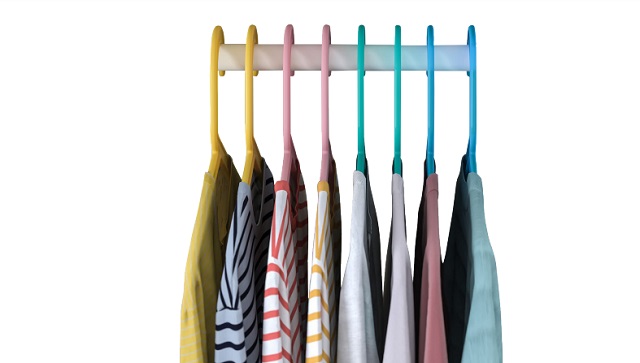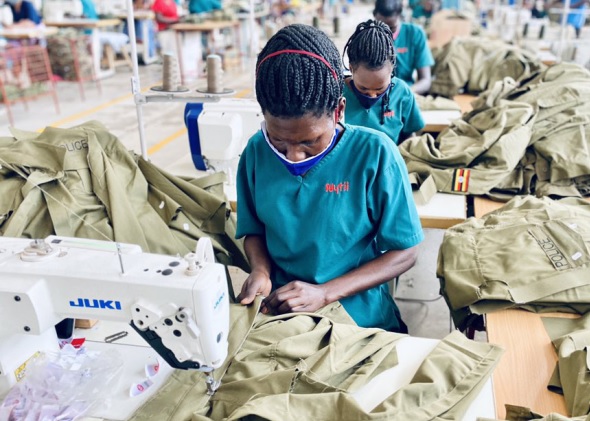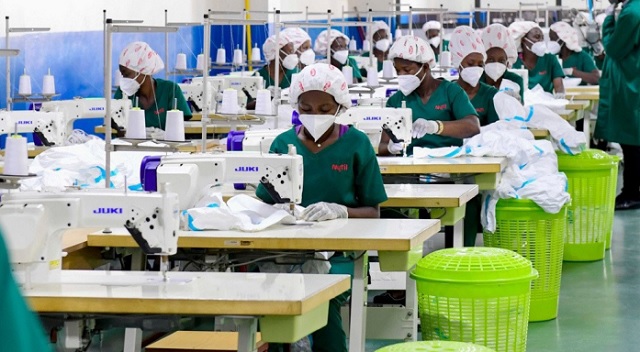
Why Uganda can’t live without clothes of `dead people’
COVER STORY | THE INDEPENDENT | On Sept.10 President Yoweri Museveni revealed that some American cloth manufacturing companies have cancelled orders of textiles from Uganda because of the Anti-Homosexual Act (AHA) he signed into law in late May.
“The homosexuals in the US are interfering with our export of textiles. Some of the orders have been cancelled by the homosexuals there,” the president said while presiding at the commissioning of members of the Uganda Prisons Services at the Kololo Ceremonial Grounds in Kampala.
Uganda is reported to annually export about U.S$200 million worth of textiles and apparels to the U.S under the African Growth and Opportunity Act (AGOA). The Act provides some sub-Saharan African countries tariff and quota-free access to the US market for textile and agricultural goods. But the African states, in turn, must allow import of second-hand clothes from the U.S. under the program.
In the end, the net AGOA trade worth for Uganda, meaning total U.S. exports to Uganda minus total imports, leaves a surplus of about US$1 million for Uganda.
However President Museveni in August threw a spanner in the arrangement when he announced a ban on importation of used clothing into the country which is aggressively pursuing an import-substitution policy.
“We have people here who produce new clothes but they cannot infiltrate the market,” Museveni said.
He was echoing local textile and apparel manufacturers who say the export of second-hand clothes from the U.S. and other western countries to Uganda is a form of predatory dumping, with the foreign countries aiming to ensure that Uganda and other African recipients of second-hand apparel do not gain from the cotton and textile industry value chain.
Museveni said he is not concerned about that the net value of what Uganda earns in sales to the U.S. under the AGOA programme and that the money Ugandans spend on second-hand clothes has been in favour of the Americans.
“The money we have been squandering with second-hand clothes, importing other people’s fabrics, is much more than what the country is going to earn from the sales to the U.S,” he said.
He said, in any case, the second-hand clothes are “for dead people”.
“When a White person dies, they gather their clothes and send them to Africa,” Museveni said.
Not dead people’s clothes
Although the `dead people’s clothes’ remark has been picked on by local media, it is only partly correct. In reality, the growth of mass produced high end clothes at low cost has led the value of clothes to drop drastically. People buy and discard more clothes than ever before as between 80 and 100 billion new clothing garments are produced globally every year. The result is that more unwanted clothes are being donated, resold, and swapped. More than 70% of clothes donated globally ends up in Africa, according to a usually quoted figure attributed to the British NGO, Oxfam. According to some fashion industry reports, wearing second-hand clothes is increasing becoming a way of making an environmental friendly statement.

“Secondhand clothes don’t come from the dead. That’s not how fast-fashion systems work. People don’t die quickly enough for fast fashion, only trends do,” says Bobby Kolade, a Ugandan fashion designer, founder of Buzigahill, the company behind the Return to Sender clothing line that redesigns second-hand clothes and redistributes them to the Global North, where they were originally discarded before being shipped to Uganda. Kolade says he worked in the European fashion world for high-end brands like Balenciaga and Maison Margiela.
In an article titled: ` A ban on used clothing imports isn’t the answer – Uganda must find homegrown solutions’ published in the Guardian newspaper of the UK, he says when he and colleagues founded Buzigahill in 2021, the mission was to produce clothes for the local population using Ugandan cotton. But after years of research, they conceded that “Uganda’s textile industry lacks the capacity to substitute secondhand clothes”.
On his website, Kolade says their research found that while in the 1970s Uganda was producing 84,000 tons of cotton yearly and processing 85% of it for local consumption, today, only 5% of Ugandan cotton is consumed by its own people. The rest is being exported in its raw form.
According to the country statement on the cotton sub-sector for Financial Year 2020/21 by the Cotton Development Organisation, 50,709 bales (9,381 Mt) of lint were produced in Uganda. The report was presented to the 79th International Cotton Advisory Committee (ICAC) plenary.
Kolade says chief among the reasons for this decline in industry is the large-scale import of second-hand clothing from the Global North.
Each day, millions of unwanted clothes from thrift stores and donation bins in Europe and North America land in cities across Africa, Asia, and Latin America. Their low-cost and sheer abundance leaves little room for local designers in countries like Uganda to thrive.
“Secondhand textiles are a valuable source of tax revenue for our country. A ban is a vote for economic suicide,” he says.
Kolade says according to the Uganda Dealers in Used Clothing and Shoes Association, there are more than 4 million Ugandans directly and indirectly active in the used-clothing and textiles supply chain.
“The supply chain can’t be dismantled within the president’s now-expired seven-day deadline,” he writes.
He says orders for secondhand clothes from suppliers in China, the U.S., Canada, the UK, Turkey, Australia and the UAE have already been placed before the end-of-year holiday season. He asks whether, under the proposed ban, the containers enroute to Uganda would be sent back.
“Will the 50,000 vendors at Owino Market in Kampala be compensated, or sent home? What happens to all the small businesses upcycling secondhand clothes?” he says.
Museveni also issued guidelines on use of only internally woven fabric.
“The only thing that I will allow to import is polyester, as we are not making it yet,” he said.
Tightening the noose
Soon after Museveni signed the AHA, the World Bank suspended loans to Uganda on the grounds that the law “contradicts” the global lending institutions values.

Earlier, on March 28, in a warning to Museveni not to sign the AHA, more than 35 major multinational companies, including those with operations and employees in Uganda, released a statement highlighting the negative repercussions the AHA will have on their ability to do business in Uganda.
The Public Affairs Officer at the U.S. Mission in Uganda, Ellen Masi, stressed this point when contacted by journalists regarding the recent ban of Ugandan textiles.
With or without the AHA, Uganda has for many years been tightening the noose around the import of foreign clothing. Just like other low income countries seeking to develop their local textile industries, Uganda has mainly sought to gradually increase the amount of taxes levied on imported finished textile products, including second-hand clothes.
Campaigns to restrict second-hand clothing are nothing new. South Africa has had a ban in place for decades. Ghana barred the sale of second-hand underwear in 2011. Malawi, and Zimbabwe have also been considering bans. Used clothing imports are also outlawed in the Philippines.
Apart from the threat from second-hand clothes from the West, the textile and apparel industries in poor countries like Uganda, face massive completion from cheap finished clothing products from China, India, Turkey, Malaysia and more.
In the East African Community (EAC) region, for example, the import duty on finished textile products has recently been pushed from 25% to 35%.
According to the Ministry of Finance, only 10% of cotton grown in the country is converted into textiles locally. But the government has calculated that within an eight-year period, if the importers of Ugandan raw cotton are induced to set up textile and apparel factories in Uganda, up to 50,000 direct new jobs would be created. An additional 250,000 indirect jobs would be generated together with US$650 million in additional export revenues.
In 2018, the U.S. warned East African Community (EAC) leaders not to ban importation of used clothes because it violates conditions set to expand trade and investment in Africa under AGOA.
Earlier in March 2016, the heads of state in the EAC, which then comprised Uganda, Kenya, Tanzania, Rwanda, Burundi and South Sudan, had agreed to ban import of used clothes in the region in three years. The move was part of the EAC Vision 2050 and the Industrialisation Policy to enhance a manufacturing sector.
The U.S. was at the time also reviewing their trade relationships with East Africa in response to a petition filed by their Secondary Materials and Recycled Textiles Association (SMART), which complained that the ban “imposed significant hardship” on the U.S. used-clothing industry and violated AGOA rules.
In Financial Year 2017/18, Uganda, Rwanda and Tanzania had raised taxes for used clothes and offered incentives to manufactures to invest in their local textile sectors. But the U.S. also demanded that the countries decrease their tariffs to their pre-2016 levels.
In the same year, Rwanda which proved to be the most aggressively opposed to import of used clothes, pushed its tariff to $5 per kg on import of used clothes. It also aggressively pursued the development of a local new clothes industry.
The Rwandan government brought in Chinese entrepreneurs to train locals in making clothing to sell locally as well as to export. The move was marketed as a push to save the “dignity” of the Rwandan people that is lost when they wear second-hand clothing from the West.
“It’s about being capable and self-reliant. We want to be independent… wearing clothing that was owned by another person, is this dignity? Can this make you proud?” said Gerald Mukubu, head of Rwanda’s Private Sector Federation, at the time.
The Rwanda government brought in technicians from Kenya to teach locals how to sew, cut material, and inspect the production line. It set up a professional group, the Rwanda Association of Tailors and the Chinese offered management courses.
Not the right strategy
At the time, ODI; the UK global affairs think tank said the proposed bans on second-hand clothing “make little sense”.
“The effort to promote industrialisation in the East African region is commendable – but it needs to be directed toward coherent industrial policies rather than shutting out potentially beneficial international trade flows,” it said.

It said banning imports is not the right strategy for two reasons; first because, according to them, the ‘import substitution’ strategy is misguided and does not work.
The ODI said Latin American countries that tried import substitution to shield their nascent industries from external competition in the 1990s got largely disappointing results that included slower industrial growth and the presence of over-priced low quality goods on the domestic markets.
Secondly, the ODI said, banning imports of used clothes means that the population has to choose between buying expensive new imported goods or buying poor quality domestically produced goods.
“If the latter are costly, or of poor quality, East Africans citizens will have to spend more on these goods,” the ODI said, “Poorer people, who are more likely to purchase worn shoes and clothes, will bear the burden.”
According to the ODI, there are better ways to promote the garment sector in East Africa and create a vibrant manufacturing sector. They all revolve around the same principle: reducing costs faced by manufacturers to ensure that they can produce at a profit. This is through improving infrastructure, ensuring a cheap and reliable supply of power, or offering incentives such as tax relief for producers, export incentives for firms targeting international markets, asking foreign firms to use domestic inputs and labour, and promoting sectors that are linked to the government wants to develop.
These types of measures, collectively known as ‘industrial policies’, actually work, the ODI said.
“These policies make import substitution redundant. East Africans can produce clothes and footwear for export while at the same time importing second-hand products for domestic consumption,” it said.
Uganda’s model
The Uganda government appears to be pursuing a similar model.
But Kolade says Chinese companies are given land by the Ugandan government to build industrial parks, tax exemptions and preferential treatment for importing machinery and raw materials, while local startups struggle to break even under the weight of bureaucracy and taxes.
“I’m reminded of the preferential treatment the British protectorate offered Asian people during colonial rule,” he says.
He says new textile facilities such as Rong Sheng Garments and Kyoga Textile Company at the industrial park look impressive on paper. But how sustainable are they in practice, he asks.
“As a nation, our capacity to redesign, reuse, upcycle and remake has developed into a culture and a visual language – why not develop smaller industries around these circular ideas as opposed to replicating unprogressive models of production and working environments,” he says.
Kolade says a gradual phase-out scheme is the only feasible long-term solution. But he says, he also wants importation of torn and stained clothing banned.
“Only in an unjust, waste-colonial world are Ugandan importers blindly forced to purchase bales of white shirts with yellow-green armpits,” he says.
For many people, used clothing is all they can afford. But for others, wearing mivumba, is a way to ensure they stand-out and do not wear the same thing as everybody else.
“The new clothes are like uniforms. It looks bad, like we are a sports team or a group of church singers,” said a young man in a news story about second-hand cloth in Rwanda.
 The Independent Uganda: You get the Truth we Pay the Price
The Independent Uganda: You get the Truth we Pay the Price





